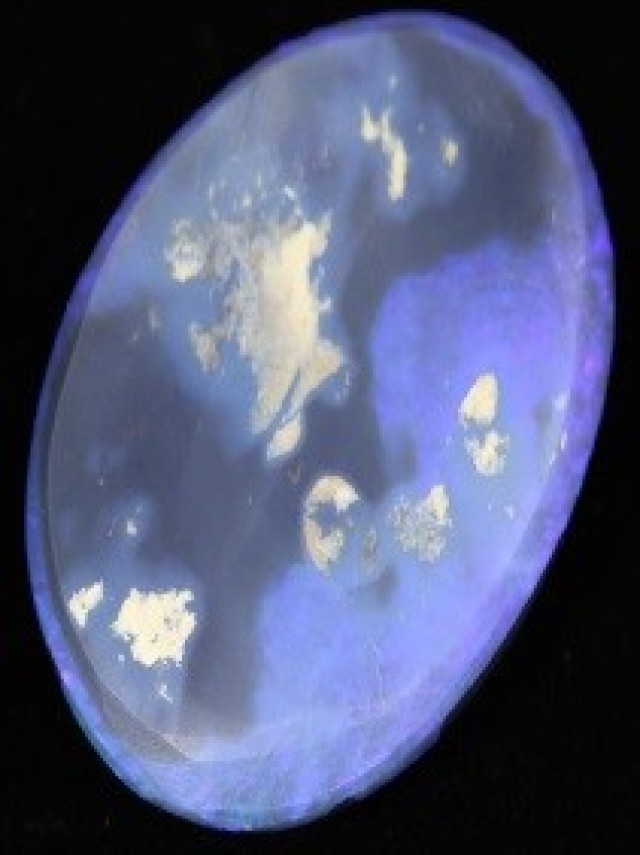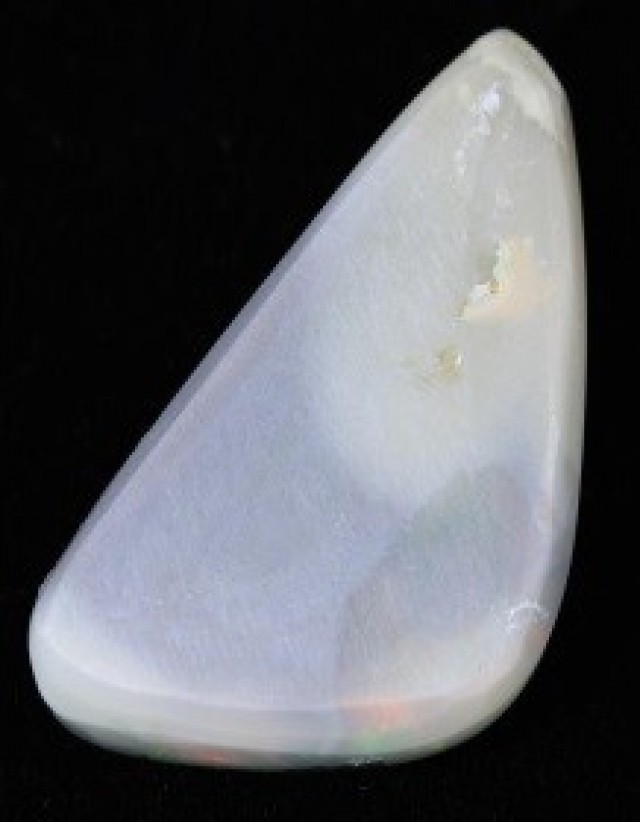
How Does The Back Of An Opal And Its Cut Determine The Value Of An Opal?
 Opal buyers always ask about the strength and durability of an Opal if it has inclusions or sandy potch on the back. We will answer your questions and discuss how the back of the Opal can also affect the value. It is an important question.
Opal buyers always ask about the strength and durability of an Opal if it has inclusions or sandy potch on the back. We will answer your questions and discuss how the back of the Opal can also affect the value. It is an important question.
It is worth remembering that opal forms in sandstone so you can expect some sand to be in the Opal naturally. Having cut thousands of Australian Black Opals over the last 25 years, I have seen almost every type of backing imaginable. I have operated cutting factories and have noted all the different appearances of the backs of opals. Watching how jewelers set Opal with inclusions and sand on the base of the Opal gives great insight into how it affects the overall stone.
The biggest problem that Jewelers experience is setting cheese block cut (Opals with straight sides). It is difficult to have claws to hold the ring tight or the Opal can be thin. Opal can chip when too much pressure is applied to the ring. The backing of an Opal only causes a problem for Jewellers when there is sand on the sides of Opal. We will go into the things to look for a little bit later.
What is Potch?
Potch on the base of the Opal is the material that has mixed with the silica when formed over millions of years. Potch does not have Opal colours. When water has seeped through cracks in the earth and fills empty cavities sometimes the sides will catch some sand and trap it in the Opal. Other times some dark minerals such as sand and rock can also get trapped. Some potch also has silica in it and is hard.
It should be noted that not all sandy potch is equal. There are different levels of stability. Sand can be fine and loose or it can be hard and stable. There is a special type of sandy matrix called ‘shin cracker’ which is sand mixed with Silica. This type of sand is extremely hard and stable.


With my system I value an Opal on different criteria before looking at the back of the Opal. The questions I ask myself when looking at the top of the Opal is to gauge the body tone and brightness as well as the shape and colour intensity.
- A well cut stone looks appealing and is in balance.
- A high lustre (quality of the polish) is preferred which highlights the colours.
So in few seconds you have appraised and valued the Opal.
Then I think how quickly will this Opal sell, is it a popular oval shape of freeform shape. Some free form shapes are perfect rhythmical shapes of nature and sell quickly. Others are odd freeform shape and are slow sellers that need good a jeweler to set.
The Next stage of valuing Opal is looking more closely at details.
- Is the colour directional or full face?
- If full face of color, the price increases
If it has a unique and clean pattern that will increase the value
If it is a symmetrical cabochon, the price increases
Is it free of cracks and inclusions visible to the naked eye?
Lastly I look at the bottom of the Opal.
So if we take a beautiful solid Black Opal from Lighting Ridge as our base Opal and compare it with a Black Opal with a sandy back it may be worth 30% less. If the stone has deep sand in it which makes the stone weaker it could sell for 50% less.
How To Judge The Base Of An Opal
Acceptable Backing
The Opal has a clean black base or meets the following criteria that will slightly have minimal effect in the value of an Opal:
- Some sand on the back is acceptable
- Potch on the bottom of Opal has small areas of grey potch on black potch
- Base has webbing lines




Backings That Will Affect The Value Of The Stone
- Sandy potch on the side of the Opal. This makes it difficult for a Jeweller to set
- Opal has a window and part of it is transparent when viewing on top
- Sandy potch on the side of the Opal will force it to be bezel set instead of claw set
- Large areas of sandy potch on the base
- Pitted base with potch. Basically holes in bottom
- Sandy potch close to where the claws will hold the stone. This might cause the setting to not be strong enough to hold.
- If it is a crystal stone which is transparent you can see the sand from the face. This usually lowers the value but some people like a 3D effect of the inclusions in the stone.
- Thin Opal or Opal that has a deep sand in the back will make the stone weak as it may break when knocked.
- Some jewelers can reinforce the base to add strength like a doublet but this stone must be declared as a treated stone.
- If a stone is thin the jeweller can set it deep in a bezel setting which protects the stone from knocks.
Example of Backings To Be Aware Of
 If the sand is deep and goes up the side it could cause problems.
If the sand is deep and goes up the side it could cause problems.
 If the sand on the back of this Opal is deep it could cause weakness.
If the sand on the back of this Opal is deep it could cause weakness.
 It is worth checking that the back of this stone does not contain any cracks.
It is worth checking that the back of this stone does not contain any cracks.
As you can see the backing of an Opal can affect the value of an Opal but only when there is significant sand or holes. The most important thing to look at first when judging an Opal is the aesthetics from the top. These factors (color, base body tone, symmetry) all contribute to the final price of an Opal. The backing plays a minor role in valuing the final Opal.
Now That You Know What To Look For Check Out Our Opals
Search the Opal Encyclopedia
Related Auctions
Related Articles
Australian Black Opal is one of the rarest gemstones on earth. It has every color of the rainbow on a black ground which makes the colors dance.
8th May 2018
Boulder Opal is one of the most undervalue opals valuable on the market. Learn more about this unique opal and browse the beautifully stones we have for sale.
29th May 2019
With a passion for opals, Wayne and Estella Sedawie established Opal Plus more that 14 years ago and have found the internet to be a valuable tool. It’s where most of the company’s international transactions take place.
17th Oct 2018
Latest Articles
An opal’s price comes down to a variety of factors, all of which we’ve broken down in this guide to opal grading and prices. Learn all about opal grading and the prices of each type of opal!
19th Jul 2023
Come on a journey and learn about the healing power of opals from our guest writer Vivien Schapera from Crystal Healing Techniques!
20th May 2023
The Flame (or Fire) Queen opal is the world’s most expensive opal, sold for the modern equivalent of $3 million dollars. Learn all about its history and qualities!
18th Feb 2023
Article Categories
All there is to know about Opals including Black Opals, Ethiopian Opals & Boulder Opal
15 Articles
Check out our fascinating information and articles on all things amazing in the Opal world
43 Articles
Opal Auctions sellers who are approved as opal Verified Sellers
4 Articles








